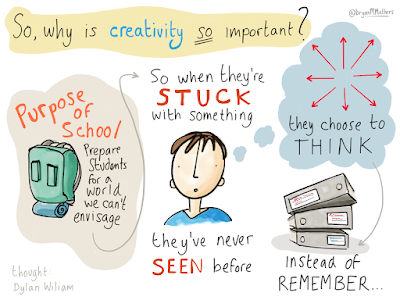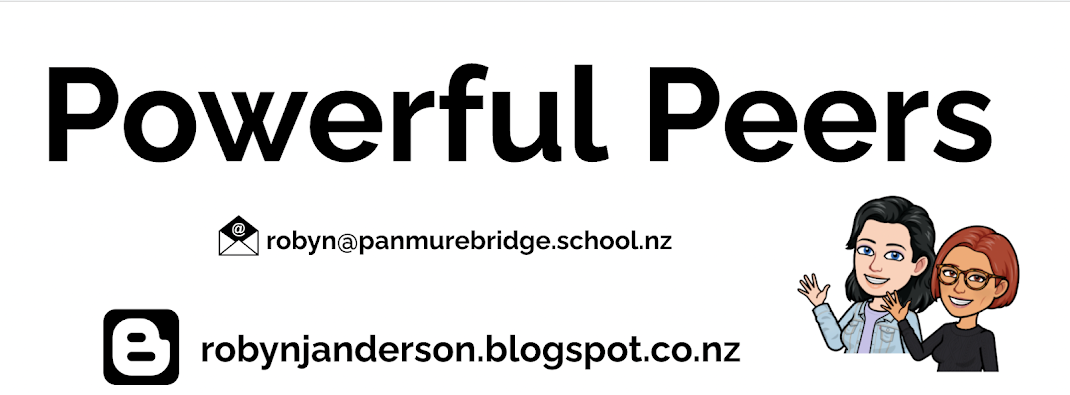To explore the importance of creativity in education I asked Gemini to carry out a deep research for me based on the prompts I gave it. The findings below are my words but are based on what Gemini generated. Sites I retrieved information from have been linked but this summary of my reading does not reflect all the sites I visited as a result of my initial search.
Creativity is a core building block in education. It affects how students think and turns learning from simply remembering facts into a fluid connection to the learning. When looking at it through the lens of school, creativity means a student's ability to come up with new and valuable ideas, solutions, or tasks. This often involves thinking outside the box, using their imagination, and being willing to take risks and try new things. It empowers students to think differently, look at problems from all perspectives, and create original answers that strengthen their connections to the learning.

Image retrieved from here
Creativity helps prepare students for the future. In our ever-changing world, the ability to adapt, innovate, and solve problems creatively is essential if the students we teach today are going to find success tomorrow. Creativity improves learning outcomes when the learning is engaging, meaningful, and relevant. This is the catalyst to keeping our students motivated as it provides the opportunities needed to deepen their connections to the new learning.
In the past, literacy was seen as a foundational set of reading, writing, and counting skills. The 21st century has transformed this thinking to meet the demands of an increasingly digital, interconnected, and information-rich world. UNESCO defines literacy as a continuous process of learning and proficiency in reading, writing, and using numbers throughout life. This encompasses the ability to identify, understand, interpret, create, and communicate information effectively in a rapidly changing global environment. This leads to a deeper comprehension than simply processing words and phrases at a linguistic level.
The article 'What is creativity in education?' by Tim Patston, retrieved from the The Education Hub, states that 'Creativity is producing something new, relevant and useful to the person or people who created the product within their own social context.... Something that is very creative to a Year One student – for example, the discovery that a greater incline on a ramp causes objects to roll faster – would not be considered creative in a university student.... Creativity is valuable in education because it builds cognitive complexity... it relies on having deep knowledge and being able to use it .... with an existing set of knowledge or skills... to increase both knowledge and skills. It develops over time and is more successful if the creative process begins at a point where people have at least some knowledge and skills'. The sentence in bold is the one that resonates most with me when I apply it to my structured literacy context. I refer back to my previous post where I explain how we are using creativity to build on the known.
Nicole Krueger's ISTE blog post from 2022 states that creativity motivates kids to learn because 'when students are focused on a creative goal, they become more absorbed in their learning and more driven to acquire the skills they need to accomplish it'. This post reaffirms my initial thinking that we need to continue to harness the digital affordances a 1:1 chromebook class has to offer as we navigate our structured literacy journey by stating that 'teachers who frequently assign classwork involving creativity are more likely to observe higher-order cognitive skills — problem solving, critical thinking, making connections between subjects — in their students. And when teachers combine creativity with transformative technology use, they see even better outcomes'.
This deep research has allowed me to gain a deeper understanding of my topic. I will be continuing my journey to explore the importance of creativity in learning in my next post.

















